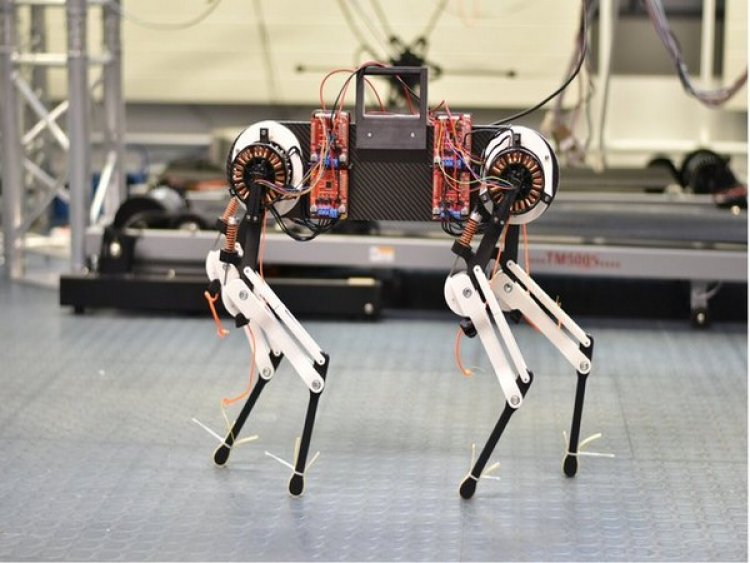Scientists create dog-sized robot to study how animals learn to walk

Stuttgart, Germany: The Max Planck Institute for Intelligent Systems (MPI-IS) in Stuttgart conducted a study to discover how animals learn to walk and learn from stumbling. They created a four-legged, dog-sized robot to assist them in figuring out the details.
The findings of the research were published in the journal 'Nature Machine Intelligence'.
A newborn giraffe or foal must learn to walk on its legs as fast as possible to avoid predators. Animals are born with muscle coordination networks located in their spinal cord. However, learning the precise coordination of leg muscles and tendons takes some time.
Initially, baby animals rely heavily on hard-wired spinal cord reflexes. While somewhat more basic, motor control reflexes help the animal to avoid falling and hurting themselves during their first walking attempts.
The following, more advanced and precise muscle control must be practiced, until eventually the nervous system is well adapted to the young animal's leg muscles and tendons. No more uncontrolled stumbling - the young animal can now keep up with the adults.
"As engineers and roboticists, we sought the answer by building a robot that features reflexes just like an animal and learns from mistakes," said Felix Ruppert, a former doctoral student in the Dynamic Locomotion research group at MPI-IS. "If an animal stumbles, is that a mistake? Not if it happens once. But if it stumbles frequently, it gives us a measure of how well the robot walks."















































